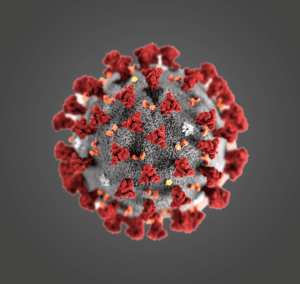 The dog days of summer might be behind us, but our four-part Microbial Genomics Webinar Series is sticking around as a focal point of the summer. From the end of July to the beginning of September, scientists shared with us how they have used highly accurate PacBio long-read sequencing to make new discoveries about bacteria, viruses, and the complex systems they inhabit and influence.
The dog days of summer might be behind us, but our four-part Microbial Genomics Webinar Series is sticking around as a focal point of the summer. From the end of July to the beginning of September, scientists shared with us how they have used highly accurate PacBio long-read sequencing to make new discoveries about bacteria, viruses, and the complex systems they inhabit and influence.
Here’s a recap of what was shared:
Part 1: Optimizing for Information: What Richer Data and Better Assemblies Reveal About Metagenome Structure and Function
Derek M. Bickhart, Ph.D., Research Microbiologist/Bioinformatician at the United States Department of Agriculture, and Dan Portik, Ph.D. (@DPortik), Bioinformatics Scientist at PacBio, kicked off the series talking about top tools and tips for metagenome sequencing and analysis on the Sequel Systems.
In “Deep Sequencing of a Sheep Fecal Sample with HiFi Reads and Hi-C Data,” Bickhart demonstrated how deep sequencing that combines HiFi reads and Hi-C data can enormously increase recovery of high-quality MAGs and connect plasmids and viruses to host strains. The presented HiFi sequencing data produced 127 high quality MAGs including 44 closed circles from a sheep fecal sample, which increased to 428 complete MAGs with Hi-C data.
Then, Portik dared viewers to “try this at home” in his session on HiFi sequencing metagenomics examples and workflows. Full instructions and example data are available in PacBio’s metagenomics GitHub
Part 2: Resolving Viral Evolution and Quasispecies Diversity with HiFi Sequencing
 The second webinar could have been ripped right from the headlines, focusing on understanding HiFi sequencing methods for resolving viral diversity in complex systems—specifically that of COVID-19.
The second webinar could have been ripped right from the headlines, focusing on understanding HiFi sequencing methods for resolving viral diversity in complex systems—specifically that of COVID-19.
Eli Boritz, M.D., Ph.D., Chief, Virus Persistence and Dynamics Section at the National Institute of Allergy and Infectious Diseases, examined how combining fully-phased minor variant data with other data types provided insights into viral evolution, immune escape, and drug resistance in “Using HiFi Sequencing to Resolve SARS-CoV-2 Evolution During Acute COVID Infection.” Based on his findings, Borlitz suggested that the difference between the slow genetic drift of earlier sequences and the accelerated new variants of concern was the changing fitness constraints upon the virus.
Meredith Ashby, Ph.D. (@AshbyMere), Associate Director of Segment Marketing at PacBio, took the long view in her presentation Beyond COVID-19: The Long and the Short of Why Virologists Use HiFi Sequencing,” explaining how HiFi sequencing could phase entire viral genes or genomes, revealing quasispecies diversity within patients.
Part 3: Identifying Key Players in Host-Microbiome Interactions with High Resolution 16S Sequencing
Gut feeling takes on a whole new meaning when it comes to the research of Candice M. Brown, Ph.D. and Elaine Leung, Ph.D. Both women are studying how metagenome functions that impact human health can be driven by specific species or strains within a community, specifically in the gut microbiome.
In “Strain-level Profiling of the Gut Microbiome Reveals a Unique Microbial Signature in Experimental Sepsis,” Brown (@BrownLabWVU), an Assistant Professor in the Department of Neuroscience in the School of Medicine at West Virginia University, explored how the brain-gut-microbiota axis is affected by serious systemic inflammation, such as sepsis. She showed how highly accurate long-read sequencing of extended 16S amplicons enables identification of metagenome community members at higher taxonomic resolution than short read methods.
Leung, an Associate Professor at Macau University of Science and Technology, studies how the gut microbiome impacts drug efficacy. “Altering the Gut Microbiota to Activate Anti-PD-1/ PD-L1 Immunotherapy,” looked at the Leung Lab’s research into whether gut microbiome modulation via a ginseng compound combined with αPD-1 mAb could affect immunotherapy drug responses in Non-Small Cell Lung Cancer patients.
Part 4: Revealing Mechanisms of Bacterial Virulence and Adaptation with PacBio SMRT Sequencing
 From the farm to the infirmary, attendees of the final webinar in the series learned how hard-to-assemble domains and plasmids impact important biological traits, including pathogen virulence and anti-microbial resistance. With “Identifying Virulence Factors in Black Rot with Long Read Sequencing,” Zoe Dubrow, Ph.D. (@ZoeDubrow), Delivery Technology Scientist at Pairwise, started things off by sharing the importance of both high accuracy and long read length for generating closed bacterial assemblies, as shown by example of Xanthomonas, a genus of Proteobacteria that causes black rot in cabbage.
From the farm to the infirmary, attendees of the final webinar in the series learned how hard-to-assemble domains and plasmids impact important biological traits, including pathogen virulence and anti-microbial resistance. With “Identifying Virulence Factors in Black Rot with Long Read Sequencing,” Zoe Dubrow, Ph.D. (@ZoeDubrow), Delivery Technology Scientist at Pairwise, started things off by sharing the importance of both high accuracy and long read length for generating closed bacterial assemblies, as shown by example of Xanthomonas, a genus of Proteobacteria that causes black rot in cabbage.
Lynn Bry, M.D., Ph.D. (@see_anemone), Director of the Massachusetts Host-Microbiome Center at Brigham & Women’s Hospital and an Associate Professor of Pathology at Harvard Medical School, then emphasized the unique advantages of highly accurate PacBio long-read sequencing for pathogen surveillance and tracking in hospital settings.
Summer 2021 has been a whirlwind of events, announcements, and planning for the future. In the world of microbes and microbial DNA, there is still a ton in store. Stay tuned for an announcement on our most recent Microbial SMRT Grant winner, keep up to date on ASHG and check in regularly for updates about how HiFi sequencing is fueling discovery.
To watch the series OnDemand, follow these links: Part 1, Part 2, Part 3, Part 4